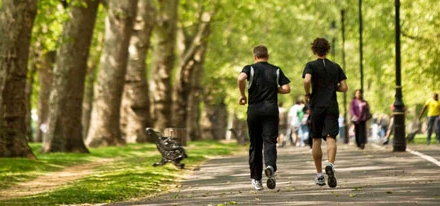I went for a jog this past weekend in Prospect Park. It was beautiful day and so many people were out enjoying the sun -the ducks were swimming in the pond, the birds were singing, everyone was enjoying nature and the last few warm days of fall. As I was jogging, enjoying the beautiful sights around me, being the movement educator I am, it was impossible for me not to notice different people and their form- in their standing, walking, running. One of the things that came up over and over again, was to see the asymmetry in people’s patterns of movement.
What do I mean when I say asymmetry?
Asymmetry is when something lacks the mirror-image quality of symmetry. So in people’s strides it tends to be a dominant side, for example: a push off of the right leg and a landing on the left. You can see that there’s only been one side working, that left leg never really pushes and the right leg never really catches. That creates an imbalance in the body, putting stress and strain on the whole system overtime.
Another imbalance I noticed was people pushing off their toes, holding tension in their upper body and not using the entire foot to push off. This puts pressure on the knees, while tension up in their shoulders creates another in balance in their musculature. Some runners had a side twist and a rotation, where the pelvis and the rib cage aren’t coordinating, so the muscles of the trunk otherwise known as your core, aren’t really being activated evenly. Integrating the whole body is important- whether you’re a casual runner or a marathon runner.
(For marathon runners, things are actually even more important because you’re putting more mileage on your body- your body needs balanced patterns.)
For a novice there are things to keep in mind. Get moving- you want to try to have movement in your body and be aware of the patterns that you are strengthening and putting in motion. While there are things to be aware of during the actual run, it comes down to what you’re doing on the mat before and after your run, or maybe the days between your runs. That’s where you have the time and the focus to integrate your hips, your shoulders, your knees, your legs, your feet- all of these parts need to be able to motor and mobilize.
Running can be a great form of exercise and sometimes you just need to clear your head and run. Saying “Oh, I’m not a marathon runner, so I don’t need to get nitty-gritty about details” – is a misconception. You will be putting more tension in your body and creating holding patterns that can lead to instability and injury later on. Instead you want to be preparing for the run doing these exercises so that when you run, you can let your body focus on moving and bring your attention to your body and be aware of your posture. Recovering from injury and getting back into movement is not the time to get sucked into the idea that there’s a certain direction or distance that you have to run.
When you’re getting started, the most important thing is to listen to your body. Does this feel good? If you feel something like pain just stop, take the time to relax and then go again. You don’t want to push yourself so hard that you find yourself doubled over on your back in pain. For marathon runners being clear about what your preparation and recovery exercises are is what makes all the difference. (Not skipping those restorative aspects!)
For all runners I want to say running in itself is not a bad thing. There is no wrong way! You just want listen to your body and do the right steps to prepare and succeed with you’re running adventures!

